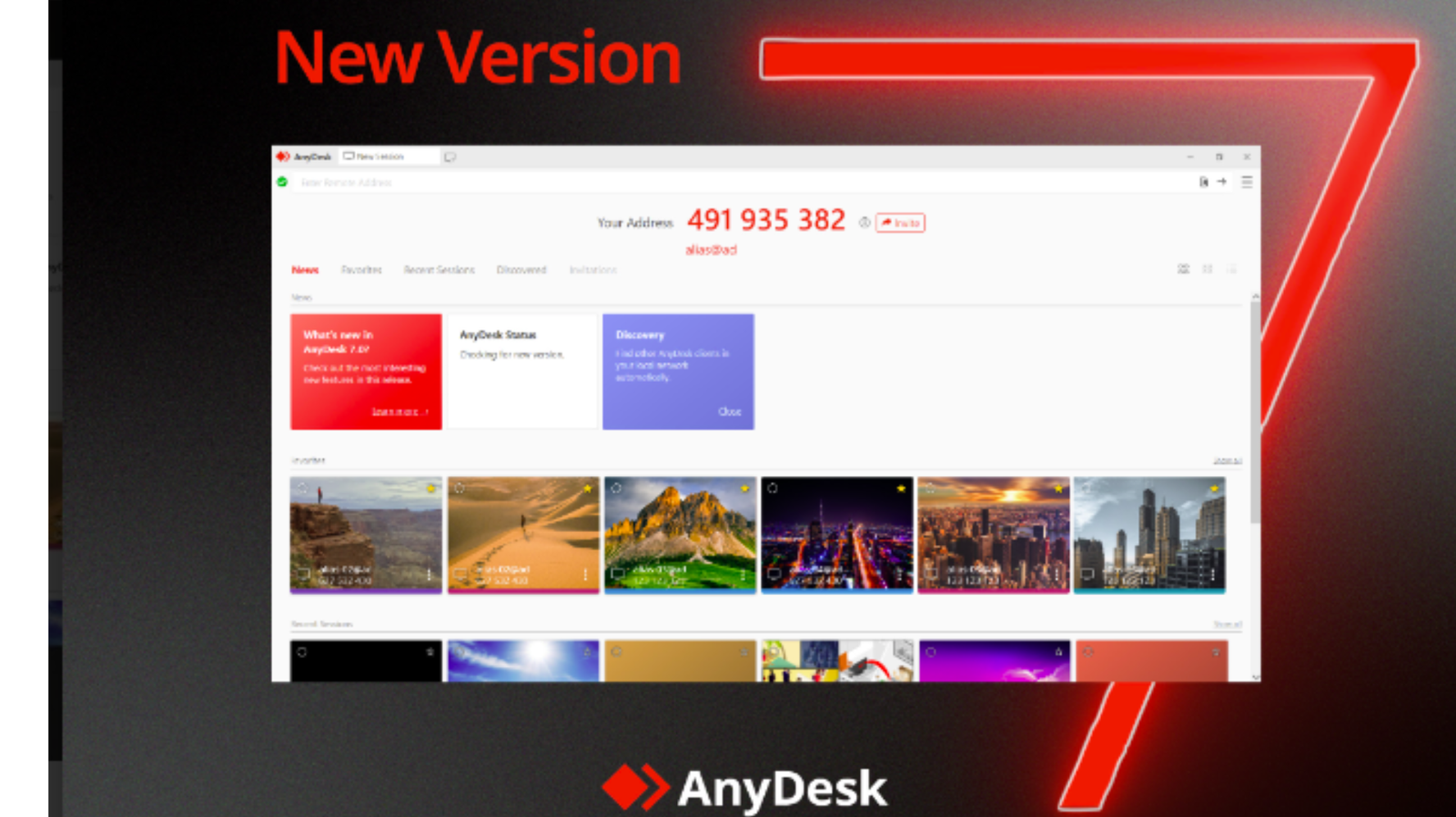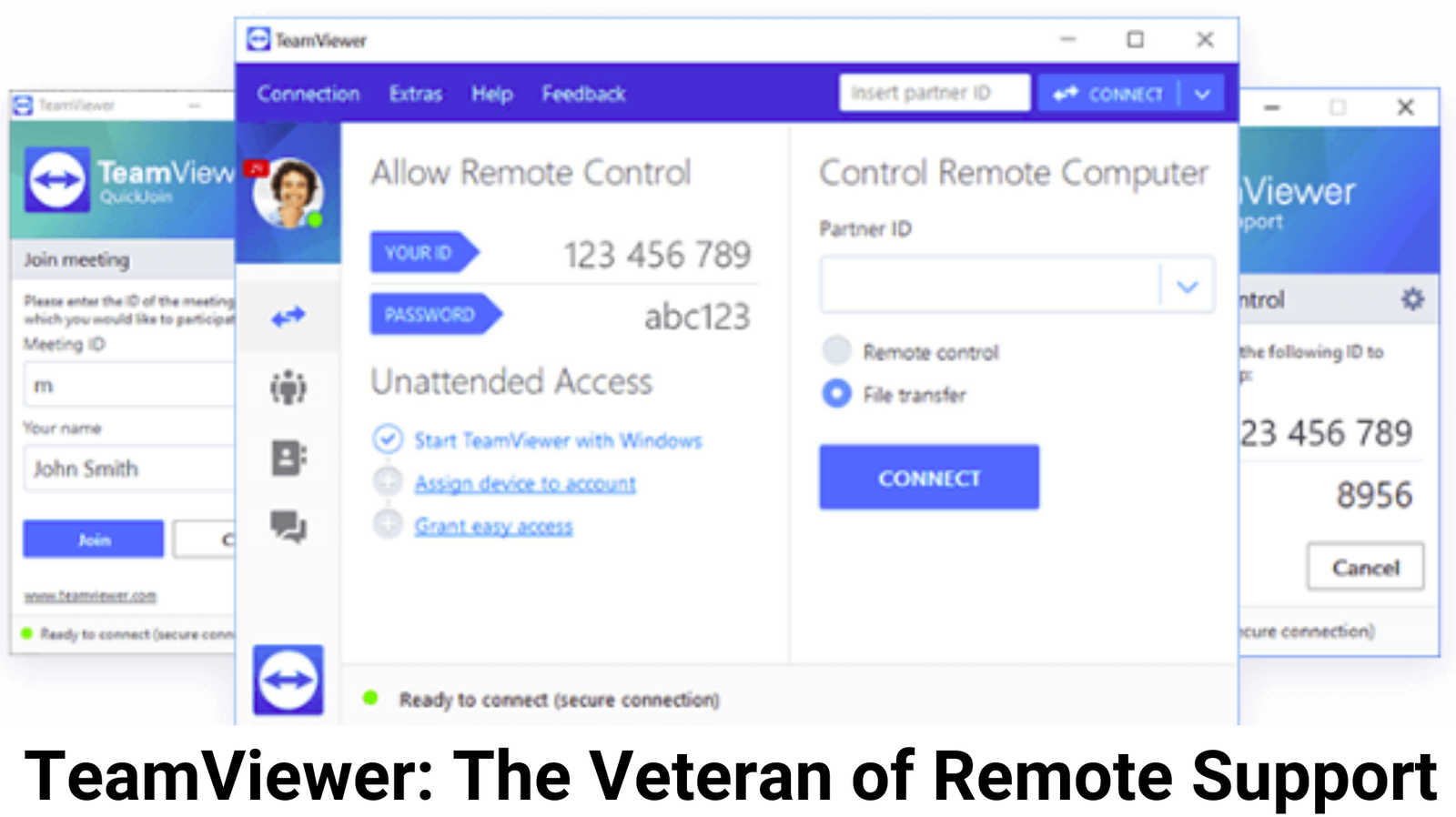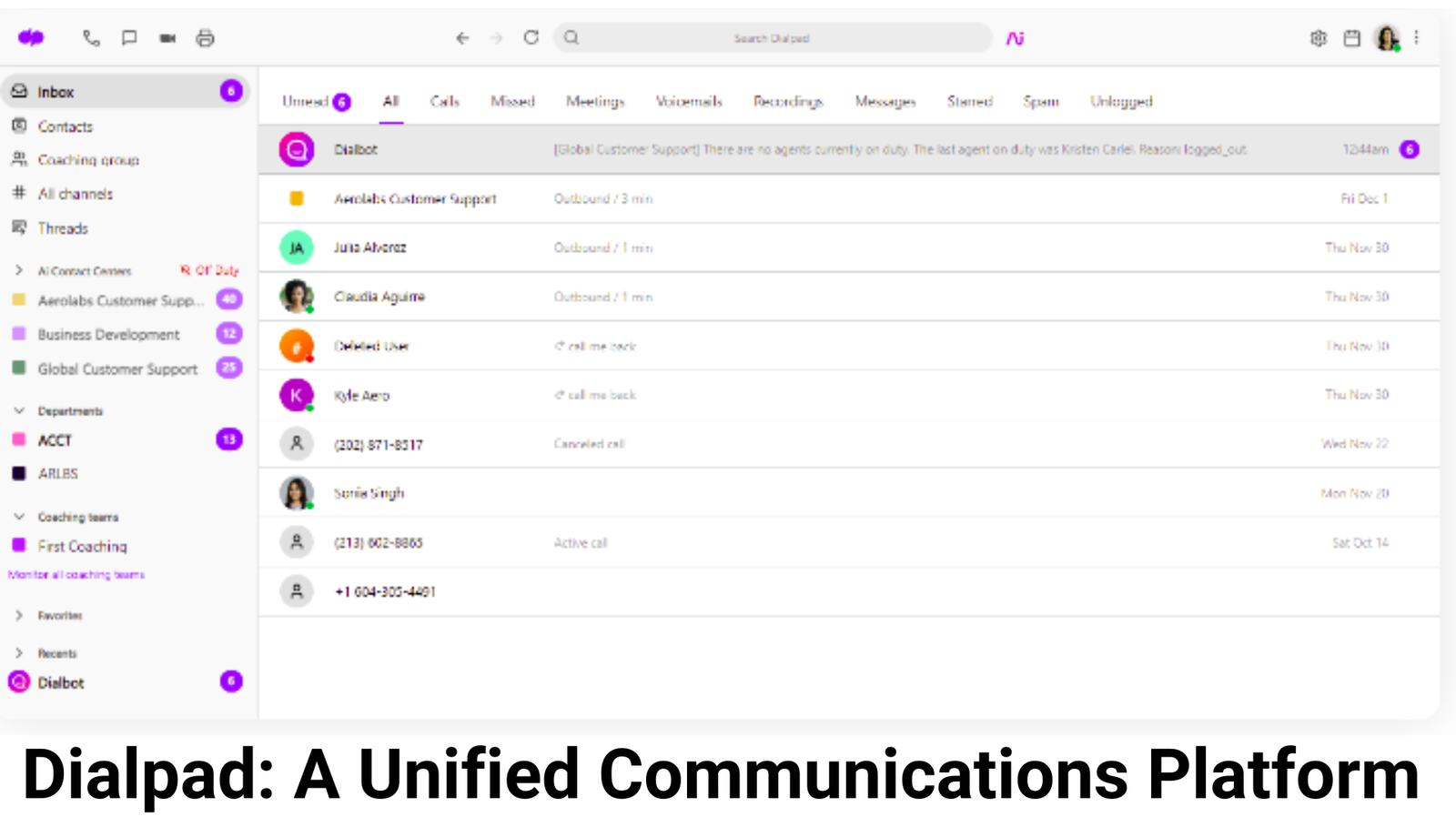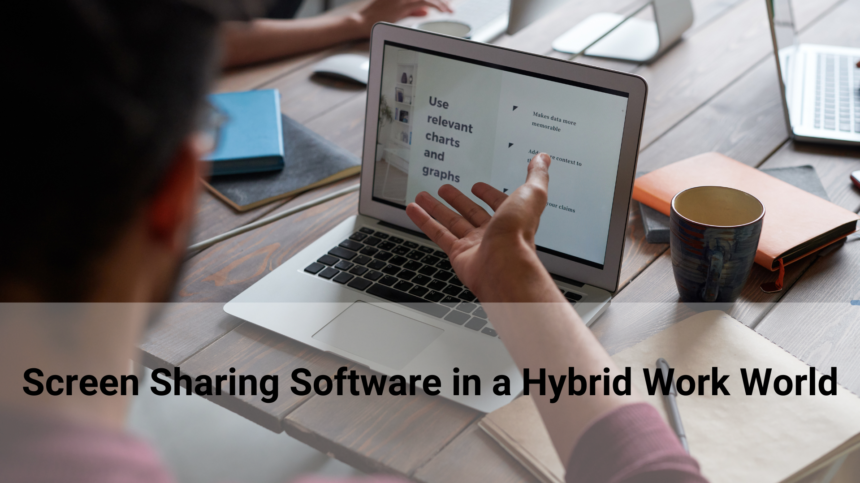With the hybrid work model becoming the new standard, the need for seamless digital collaboration tools has never been more crucial. Teams spread across different locations require intuitive and efficient ways to share information in real time, without barriers. Screen sharing software plays a pivotal role in bridging that gap, enabling people to communicate visually, no matter where they are. This not only improves clarity and understanding but also speeds up decision-making processes, whether it’s for a quick team huddle or a critical client presentation. By bringing everyone onto the same page—literally and figuratively—screen sharing simplifies complex discussions, fosters better collaboration, and helps teams stay aligned in an increasingly remote world. In today’s fast-paced work environment, the ability to share your screen is no longer just a nice-to-have feature—it’s a game-changer for productivity and communication, empowering teams to thrive despite the distance.
Key Features to Look for in 2024 Screen Sharing Tools
Beyond the basics, many platforms now integrate effortlessly with project management tools, enabling teams to work on shared tasks without jumping between multiple applications. Collaboration options like file sharing, real-time annotations, and even interactive whiteboards have become vital, allowing for richer interaction and faster problem-solving. The intuitive, user-friendly interfaces make it easy for even non-tech-savvy individuals to navigate, eliminating unnecessary learning curves. A standout feature in modern screen sharing software is the ability to easily control and switch screens between multiple users. This allows for a more dynamic and collaborative experience, making it feel like you’re all in the same room, even when miles apart. Whether you’re brainstorming with your team or presenting to a client, these features make the entire process smoother, more productive, and ultimately more engaging. The focus is now on creating a truly connected digital workspace where ideas flow freely, and everyone stays engaged, no matter where they are.
How Screen Sharing Software Has Evolved: 2023 vs. 2024
Compared to 2023, screen sharing software in 2024 has truly stepped up its game, offering a wealth of new advancements that make digital collaboration faster, smarter, and more secure. While last year’s tools provided the basics—screen sharing, file transfers, and video conferencing—2024 takes things further with cutting-edge AI-driven features. Automated meeting summaries now save time by generating detailed notes of discussions, while live transcription ensures that every word is captured, making meetings more accessible and reducing the chances of important details slipping through the cracks.
These innovations highlight the evolution of screen sharing software in 2024, showing that it’s not just about improving convenience but also enhancing the overall experience by addressing user concerns and embracing emerging technologies. Whether it’s making meetings more efficient or ensuring security in an increasingly digital world, 2024’s screen sharing tools are designed for the demands of the modern workplace.
Top Free Screen Sharing Tools: What’s New in 2024?
For businesses or individuals operating on a tight budget, 2024 offers a wide range of free screen sharing tools that deliver more value than ever before. The competition among platforms has pushed even free versions to up their game. Popular options like Zoom and Google Meet now allow for larger meetings, accommodating more participants without cutting sessions short, which was a common limitation in the past. These upgrades make it easier for small businesses, freelancers, and educators to collaborate without needing to invest in premium plans. Screen sharing software like Screenleap and Jitsi Meet are also making a splash, providing easy-to-use, no-download solutions that are ideal for spontaneous meetings or quick project reviews. Whether you need to jump into a client consultation or hold a brainstorming session with your team, these platforms offer a streamlined experience without the hassle of lengthy setups. Despite being free, they’ve made strides in offering stable performance and reliable connections, ensuring that your meetings run smoothly.
Paid Screen Sharing Software: Is the Investment Worth It?
Investing in paid screen sharing software brings a range of advantages over free options. These premium solutions offer enhanced security features, priority customer support, and advanced tools like meeting analytics, recording, and integration with CRM systems. Whether it’s the ability to host large-scale webinars or offer attendees a more interactive experience with polling and Q&A features, paid software justifies its cost by providing a more polished and professional user experience. For businesses that rely heavily on remote communication, the investment often pays off in the form of efficiency and client satisfaction.
Using Screen Sharing for Remote Learning and Education
Screen sharing Software have evolved into indispensable resources for educators in 2024, revolutionizing how lessons are delivered and absorbed. Teachers now have the power to seamlessly share a wide range of educational materials—whether it’s presentations, videos, or live demonstrations—allowing students to follow along in real time. The ability to annotate directly on shared screens adds a dynamic layer to instruction, letting educators highlight key points, draw diagrams, or clarify complex concepts in an engaging way that mimics traditional classroom methods. One of the most exciting developments is the interactive nature of these tools. Teachers can now grant students control over the shared screen, allowing them to solve problems, showcase their work, or give presentations from the comfort of their own home. This interactive feature brings hands-on learning to remote environments, fostering deeper engagement and encouraging active participation in lessons. Students are no longer passive viewers but active contributors, helping to maintain focus and improve retention of the material.
Following are the best screen sharing software
Zoom: The Leader in Video Conferencing

Zoom has established itself as one of the most popular video conferencing and screen sharing tools globally. Whether you’re hosting a meeting, conducting a webinar, or providing technical support, Zoom offers versatile solutions for personal and professional use.
Benefits of Zoom
Easy to use: One of Zoom’s strongest features is its simplicity. The interface is intuitive, allowing users to start or join a meeting with just a few clicks. Even people who aren’t tech experts can use it with ease.
High-Quality Video and Audio: Zoom is known for delivering high-quality video and clear audio, even in situations where internet bandwidth is limited.
The platform’s screen sharing feature allows participants to share their screen, whether for presentations, tutorials, or technical support. Zoom’s annotation tools enable users to highlight specific parts of the screen, For educational or brainstorming sessions, breakout rooms are a unique feature, letting you split participants into smaller groups for more focused discussions.
Cross-Platform Compatibility: Zoom works seamlessly across a variety of devices, including desktops, laptops, tablets, and smartphones. This makes it a great choice for on-the-go meetings.
Disadvantages of Zoom
Security Concerns: Despite efforts to enhance security, Zoom has faced criticism in the past for “Zoombombing” incidents, where uninvited guests would join meetings. However, Zoom has introduced encryption and password protection to address this issue.
Limited Features on Free Plan: The free version limits group meetings to 40 minutes, which can be restrictive for longer sessions.
Zoom Pricing
- Free: Unlimited one-on-one meetings and 40-minute group meetings.
- Pro: $14.99/month per host, includes 24-hour group meetings and cloud recording.
- Business: $19.99/month per host, designed for small businesses with features like company branding.
- Enterprise: $19.99/month per host, aimed at large corporations with unlimited cloud storage and advanced analytics.
Zoom Rating
- G2: 4.5/5 (37,000+ reviews)
- Capterra: 4.6/5 (11,000+ reviews)
AnyDesk: The Lightweight Remote Access Tools

AnyDesk is a screen sharing and remote access software that focuses on providing fast and secure connections. It’s particularly useful for IT professionals and tech support teams who need to troubleshoot issues on remote devices.
Benefits of AnyDesk
Low Latency: AnyDesk prides itself on offering minimal latency, meaning users can experience smooth remote desktop connections even with lower bandwidth.
Security: AnyDesk uses banking-standard TLS 1.2 encryption, ensuring that your data is safe from unauthorized access during remote sessions.
Cross-Platform Access: Available on Windows, macOS, Linux, Android, and iOS, AnyDesk allows you to access any device, regardless of the operating system.
Customizable Interface: AnyDesk allows businesses to customize the user interface with their company branding, giving a professional touch to customer interactions.
Disadvantages of AnyDesk Software
Limited Free Features: The free version is somewhat limited in terms of advanced features, making it less appealing for businesses looking for extensive remote access capabilities.
No File Transfer on Mobile: While AnyDesk allows file transfers on desktop, the mobile versions of the app do not support this feature.
AnyDesk Pricing
- Free: Personal use with limited features.
- Lite: $9.90/month per user for commercial use.
- Professional: $19.90/month per user, includes unlimited devices and session logging.
- Enterprise: Custom pricing, designed for large-scale operations with multiple users.
AnyDesk Rating
- G2: 4.5/5 (700+ reviews)
- Capterra: 4.7/5 (1,200+ reviews)
TeamViewer: The Veteran of Remote Support

TeamViewer is a well-known name in the world of remote access and screen sharing. It’s often the go-to solution for IT support teams who need to troubleshoot technical issues remotely.
Benefits of TeamViewer
Comprehensive Features: TeamViewer isn’t just a screen-sharing tool—it’s a full-fledged remote access solution. It supports file transfers, remote printing, and cross-platform access.
Secure Connections: TeamViewer uses end-to-end encryption and two-factor authentication to ensure a secure connection, making it trusted by enterprises and governments alike.
Wake-on-LAN Feature: This unique feature allows users to wake up a sleeping computer from another device, a functionality that many competitors lack.
Multi-Device Support: TeamViewer supports remote access to PCs, mobile devices, and even IoT devices, making it highly versatile for different use cases.
Disadvantages of TeamViewer
High Pricing for Businesses: While TeamViewer offers a free version for personal use, the business plans can be expensive, especially for small companies.
Occasional Lag on High-Latency Networks: Some users have reported lagging when connecting to remote devices on high-latency networks.
TeamViewer Pricing
- Free: Personal use with limited features.
- Single User: $49/month, includes one user and remote access to unlimited devices.
- Multi-User: $99/month for up to 15 users, includes remote access and device management.
- Corporate: $199/month, designed for large organizations with multiple users and advanced features.
TeamViewer Rating
- G2: 4.6/5 (10,000+ reviews)
- Capterra: 4.6/5 (8,000+ reviews)
Dialpad: A Unified Communications Platform

Dialpad offers more than just screen sharing—it’s a unified communications platform that combines voice, messaging, video, and meetings in one solution. Ideal for businesses looking to streamline communication, Dialpad has gained a reputation for being easy to use and powerful.
Benefits of Dialpad
Integrated Communications: Dialpad combines voice, messaging, video, and screen sharing into one platform, making it a one-stop solution for businesses.
AI-Powered Transcriptions: One of Dialpad’s standout features is its AI-powered voice transcription, which automatically creates meeting notes, reducing manual work.
Real-Time Coaching: Dialpad’s AI also provides real-time coaching during calls, making it a unique tool for customer support and sales teams.
Cross-Platform Compatibility: Like many competitors, Dialpad works across multiple devices, including desktops, smartphones, and tablets.
Disadvantages of Dialpad
Limited Customization: While it offers plenty of features, some users may find the lack of deep customization options frustrating.
Smaller User Base: Compared to giants like Zoom and TeamViewer, Dialpad has a smaller user base, which might limit community support.
Dialpad Pricing
- Standard: $15/month per user, includes unlimited calling and messaging.
- Pro: $25/month per user, includes advanced analytics and integrations.
- Enterprise: Custom pricing for large businesses with dedicated account management and onboarding support.
Dialpad Rating
- G2: 4.3/5 (1,200+ reviews)
- Capterra: 4.4/5 (800+ reviews)
For more details visit our Software section.








